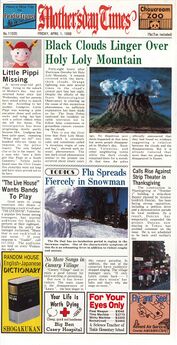
|
This article is in need of an infobox, or the existing one is incomplete.
You can help by editing this page.
|
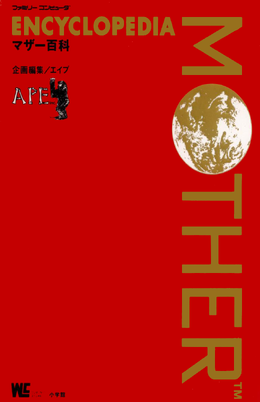
The cover of the 1989 release.
Encyclopedia Mother (Japanese: エンサイクロペディア・マザー, stylized as ENCYCLOPEDIA MOTHER) is a Japanese-exclusive supplementary guide for EarthBound Beginnings, roughly serving a similar purpose to the EarthBound Player's Guide. It contains expanded backstories for the game's events, exclusive character biographies for Ninten, Ana, Lloyd, and Teddy, alongside a player's guide with information on the game's locations, a list of items and PSI moves, a list of enemies, and developer interviews. Two versions of the book exist, with one being released in 1989 for the original launch of EarthBound Beginnings and the other in 2003 for the launch of Mother 1+2. The first version is 168 pages long, while the second version is 172 pages long. The 2003 edition is also referred to as the "Wonder Life Special".[1]
Content Summary
1989-2003 Editions
The book begins with a pull-out insert, with one side being a replica of a fictional Mother's Day newspaper (complete with articles detailing the events in the game prior to Ninten's journey), with the other side of the inset showing a full-scale map of the world of Mother in the style of a road-trip map. The book then begins with an introduction, which fleshes out: George and Maria's first meeting and marriage, George investigating strange occurrences in Mother's Day and the couple's subsequent disappearance, George's mysterious return two years later by himself, and his strange study of psychic powers. It also details Ninten's courageous vow to protect his family and to investigate the strange phenomena that has returned to the quaint town eight decades after it first occurred. Along with the introduction, the English lyrics for Pollyanna are provided above the second page of the introduction. The book then shows character bios for each of the four main protagonists, expanding their backstories and providing a photo gallery of their favorite things in each of their respective bios. After that, the book shows nine other important characters, including: Ninten's Mom, Mimmie and Minnie, Ninten's father, Pippi, Queen Mary, the Flying Men, Mick, and Eve.
The book's first chapter then starts out with an overview of Ninten's home and the town of Mother's Day; detailing maps, tricks, and information associated with each location whilst acting as a mock travel brochure. Canary Village, the South Cemetery, Choucream Zoo, Magicant, its Underground, Thanksgiving, Sweet Little Factory, Duncan's Factory, and the Santa Claus Station are also expounded upon in the same fashion, with each location having maps, real-life photographs of people, vehicles, objects, and papier-mâché models along with in-game screenshots and interviews with people involved with the game. Comic strips based off of the game are sprinkled throughout the chapter and the following one as well. There are reviews by several people located throughout this chapter and in the next, detailing what they liked and didn't like about the game, ultimately showing their appreciation for Itoi and the development crew for creating the game. There are also several Artist Profiles throughout the book, detailing the individual artists for the book and their work and contributions for it. This chapter and the following one also end with an overall summary of the chapter and a checklist of the major events covered in the respective chapter.
The second chapter begins with a fictional guide to the departure times of the Santa Claus Station's express train before the next two pages provide the English lyrics for Jeb Milne/Jeb Million's The Paradise Line against a photograph of a loading train passing by a mesa. The book then covers Reindeer, Halloween, Snowman, Advent Desert, Ruins of Desert, Easter, Swamp Land, Valentine, Cave of Holy Loly, and Holy Loly Mountain, which all have the same layout as the locations in the previous chapter. The following two pages are dedicated to an english lyric set for the Eight Melodies song with an alternate lyric set nearby, overlaid against a photograph of a car driving near a mesa with billowing white clouds swirling over it; before ending with an overall summary and checklist for the chapter.
The third chapter consists of a Goods Catalog, which details every purchasable item (e.g. the Wooden bat) and non-purchasable item (e.g. Great-Grand Father's Diary) in the game; which are each represented by either real-life models or objects. It also details a list of every vehicle you can ride in the game from the Santa Claus express train all the way to the boat you use to access the underwater lab where Eve is located, with each being represented by papier-mâché models. The next page then details the most efficient way to maximize your weapon and item usage as you gain more powerful weapons throughout the game. After that is a list of every PSI move you can use against your foes, with a section on how you can use your PSI powers in battle and when you are not in battle. The chapter then ends with an interview with Shigeru Miyamoto.
The fourth chapter consists entirely of people's reviews of Mother, with one of them, Kouji Imura, being one of Japan's foremost figures in the field of parapsychology research and PSI power development. There are also interviews with the composers of the game, Keiichi Suzuki and Hirokazu Tanaka, detailing the process behind composing the game's BGM as well as discussing the Mother soundtrack album. Additionally, there is a "making-of" section for the live-action Japanese Mother commercial, as well as an interview with Shigesato Itoi about the inspirations behind Mother and the process of bringing the project to life while also bringing an emotional quality to it. [2] The chapter then ends with a Japanese translation of the english newspaper inset from the beginning of the book.
The fifth and final chapter of the book begins with a two-page section detailing how to fight enemies; using various difficult enemies from towards the end of the game as examples of how to fight them, such as the dragon located in the Magicant Underground. The right side of the right page details some enemies (like the Starman) and their respective stats, as well as short descriptions about their respective strengths and weaknesses as well as any other unique attributes and abilities that each enemy may have. The following section of the book is the final one: it is a complete list of every enemy in the game (except Giygas), showing their stats and their descriptions (unique for each foe), along with their respective papier-mâché model; and when there is no model to represent the enemy, the in-game sprite is instead used to represent that enemy. The section ends with an artist profile before the book finally closes with a list of credits for the producers and staff for the book and its publishing company.
2003 Edition
The contents for the 2003 rerelease are exactly the same as the original version, with the only difference being an entirely new section at the beginning to celebrate the release of the then-newly-released Mother 1+2. The section begins after the newspaper/road-trip map insert and consists of an introduction by Shigesato Itoi where he gives his gratitude and appreciation to the crew who worked on the original game, the original encyclopedia, and the readers of both versions; a timeline of every Mother game and every Mother novel/book released up to that point; and a Mother 1+2 advertisement featuring Mr. Saturn and his unique form of speech. The end of the book is also different, listing the staff credits for not only the crew who worked on the 1989 version but also the 2003 edition and their respective publishing companies.
Gallery
| Encyclopedia Mother (1989)
|
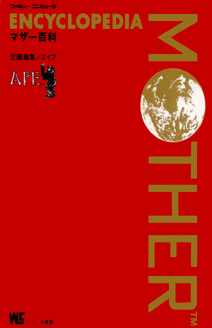
|
| The jacket cover for the book.
|
|

|
| The actual cover for the book, revealed after the red jacket is removed.
|
|
|
|
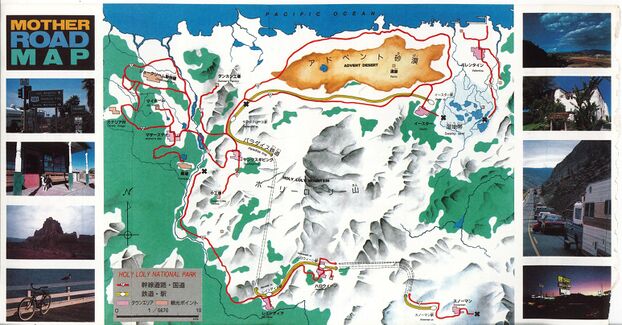
|
| The back of the newspaper inset, showing a full-scale map of the Mother world, styled after the classic Rand-McNally road-trip maps.
|
|
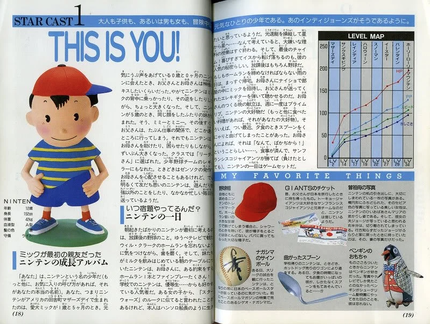
|
| Ninten's character file, laid out over two pages. There are character files for the other three protagonists as well.
|
|

|
| These pages covers Ninten's house, with the exterior of the building shown with a photograph of a real-life house.
|
|
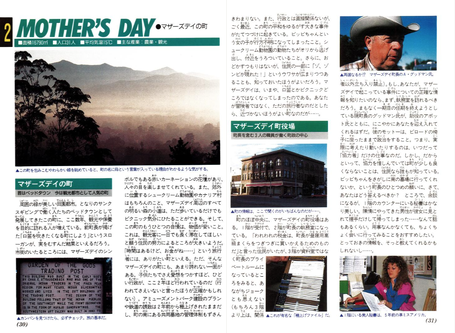
|
| These pages cover Mother's Day, expanding its backstory while also laying the section out like a mock travel brochure. The right page provides a picture of an old man with a cowboy hat, who the book depicts as the Mother's Day mayor.
|
|
|
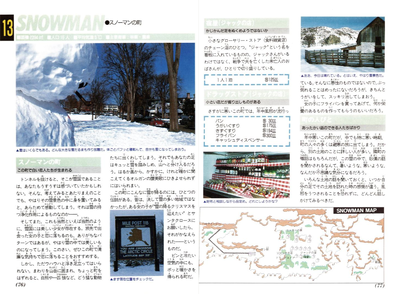
|
| These pages cover Snowman. Similarly to the Taj Mahal picture, the photograph used in the bottom of the left page to reference Snowman's location is actually a state map for the real-world U.S. state of Alaska.
|
|
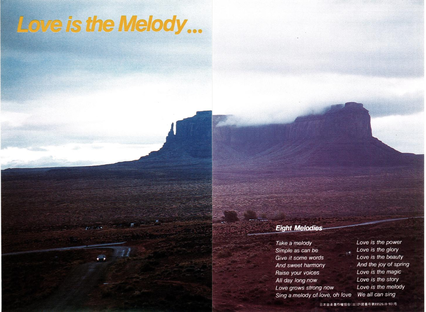
|
| The page on the right displays English lyrics for the Eight Melodies, as well as alternative lyrics for the song to the right of the first lyric set.
|
|
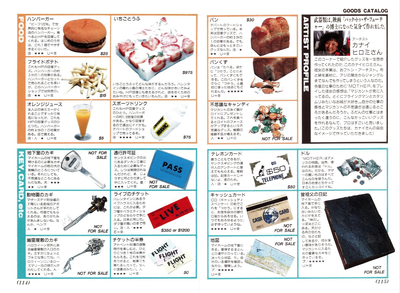
|
| These pages list items in the game that are either purchasable or non-purchasable. The top right section of the page on the right details an artist profile.
|
|
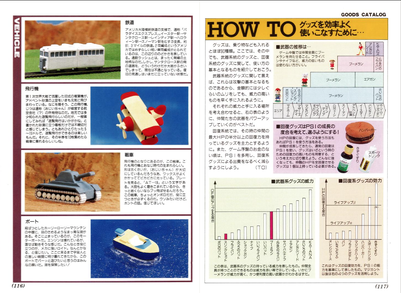
|
| The page on the left shows all of the vehicles you can ride in the game with papier-mâché models, while the page on the right shows the best way to use your items efficiently.
|
|
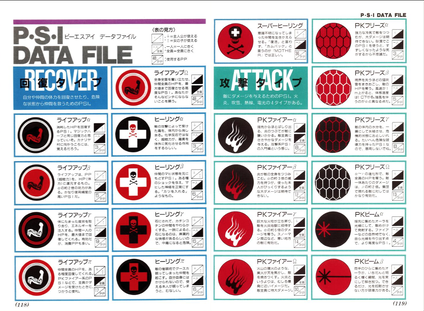
|
| This section details every PSI move you can use to attack your foes in the game.
|
|
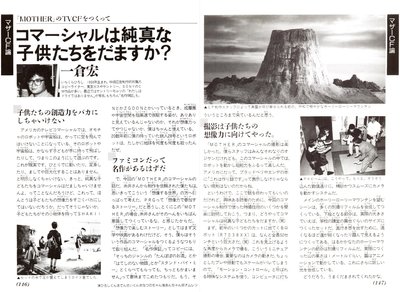
|
| This section covers multiple interviews with the reviewers of Mother, as well as interviewing the composers for the game's BGM and album soundtrack and the makers of the live-action Japanese Mother commercial. [[1]]
|
|
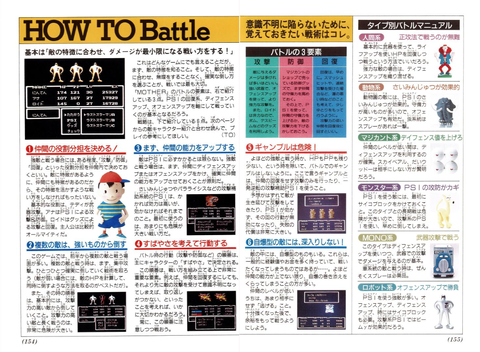
|
| These pages reveal fighting tactics for the game, as well as detailing a list of some enemies and their stats on the right page.
|
|
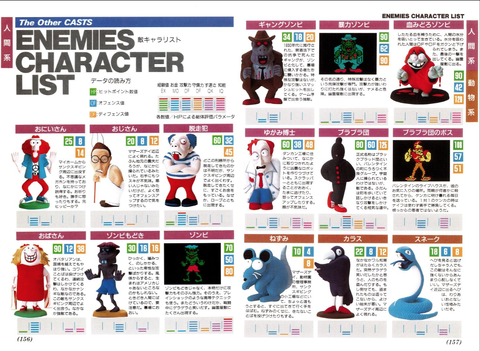
|
| This section lists every single enemy in the game and their respective stats. Every enemy that is not represented by their papier-mâché model is represented by their in-game sprite.
|
|
| Encyclopedia Mother (2003)
|
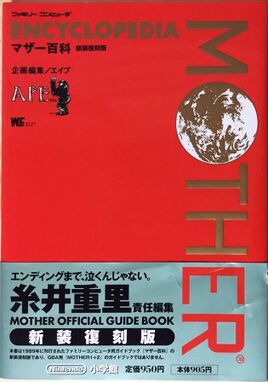
|
| This is the cover for the 2003 edition, with the silver slipcase not being present on the 1989 version.
|
|

|
| The beginning page for the 2003 edition's Mother 1+2 segment. The next two images are the full layout of the section.
|
|
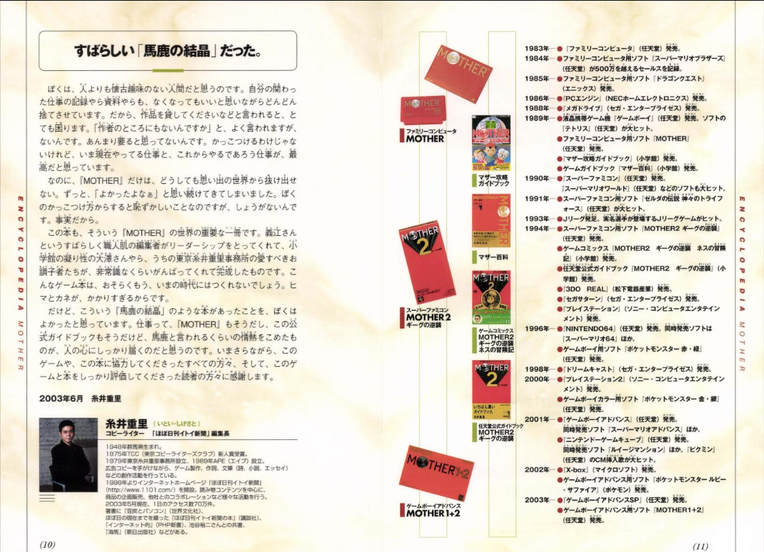
|
| The left page is a 2003 edition-exclusive introduction by Shigesato Itoi, with the right page being a Mother timeline.
|
|

|
| On the left is a Mother 1+2 advertisement featuring Mr. Saturn, and on the right is the original beginning page for the 1989 version. From here on out, the book is the same, except for the staff credits page at the end of the book.
|
|
Trivia
- This book was published by Ape Inc., the same company who assisted the development team for EarthBound Beginnings towards the end of the game's production.
- This book is notable for using real-life photographs of places, people, and objects and equating them to the fictional Mother universe. It is also notable for providing expanded backstories, detailed character information, and a list of the character's favorite things for each of the four main protagonists.
- This book is one of the only official Mother sources from the game's release to refer to the main character by the name of Ninten.
- It is unknown if this would have been published in the U.S. later on if the game's English localization, Earth Bound, did manage to be released in the fall of 1991 like originally intended.
- In the book, each location is laid out and detailed like a mock travel brochure. This could have inspired the English localization team behind EarthBound when they were writing the Player's Guide for the game, as the guide/manual follows a similar framework.
- Most of the book is Japanese only, but some pages such as the opening newspaper segment are completely in English, as well as the lyrics for the Mother songs laid out in various parts of the book.
Links
References




